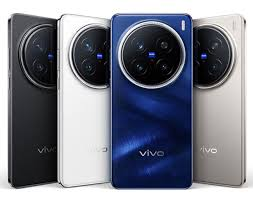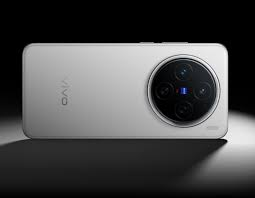Beyond the Pixels: Unpacking the V3+ Imaging Chip and AI in the Vivo X200 Ultra Camera

🧠 Dual-Chip Architecture
VS1 (Pre‑ISP)
- Handles raw sensor data pre-processing — exposure tuning, focus stacking, and early noise reduction — before the data reaches the main processor (innogyan.in, gsmchina.com).
- Built on a 6 nm node, efficient yet powerful enough for multi‑scene, high-load tasks, ensuring detail and dynamic range are retained (innogyan.in).
- Achieves 80 TOPS of AI-powered performance, optimized at ~16 TOPS/W, rivaling high-performance NPUs (gsmarena.com).
V3+ (Post‑ISP)
- Takes VS1’s processed data and applies heavy post-processing: noise reduction, sharpening, color tuning, HDR, and detail restoration (gsmarena.com).
- Based on Vivo’s known V3 architecture, featuring AI-enhanced dynamic range, color fidelity, and low-light detail via dual-core interconnect and 6 nm efficiency (vivo.com).
🎨 Imaging and AI Enhancements
- Multi-concurrent AI-ISP pipelines and Frame Info Tunneling (FIT) enable cinematic-level 4K bokeh in both photo and portrait video modes (global.chinadaily.com.cn).
- The Origin Imaging Engine (VOIE) integrates color restoration, Ultra-HD upscaling, and accelerated AI computing to push quality further (gadgetmatch.com).
- Zeiss optical coatings combined with AI—such as flash-compensation, skin-tone optimization, scene recognition, and enhanced dynamic range—deliver faithful, natural visuals (nillkinmall.com).
- Live Photo mode auto-selects the best frame, adding seamless cinematic polish to still captures (nillkinmall.com).
🔍 Real-World Performance & Feedback
- In lab demos and early reviews, AI-powered V3+ processing delivered enhanced detail and clarity, especially in low light and telephoto scenes. The triple‑flash system adjusts lighting to match zoom and scene (innogyan.in).
- Some users have noted over‑processing, particularly aggressive sharpening and unnatural textures—common in AI-first pipelines—though this delivers crispness on-display (reddit.com).
- Others applaud it as a leading-edge telephoto experience, highlighting its 200 MP Samsung HP9 sensor, 85 mm Zeiss lens, and cinematic bokeh (reddit.com).
🎯 Summary
Feature What It Enables
| VS1 Pre-ISP | Cleaner sensor data; smoother HDR & exposure; optimized foundation for post-processing
| V3+ ISP | Rich color science, robust noise suppression, advanced sharpening & bokeh, HDR video
| AI Pipeline | Cinematic portrait/video, multispectral imaging, dynamic lighting control
Together, this hardware+AI architecture creates a pro-level mobile photography experience—with DSLR-like depth and clarity in many real-world scenarios—while maintaining speed and energy efficiency. However, if you prefer minimal processing, some results may feel over‑engineered.
League Manager Editorial Team





Leave a Comment